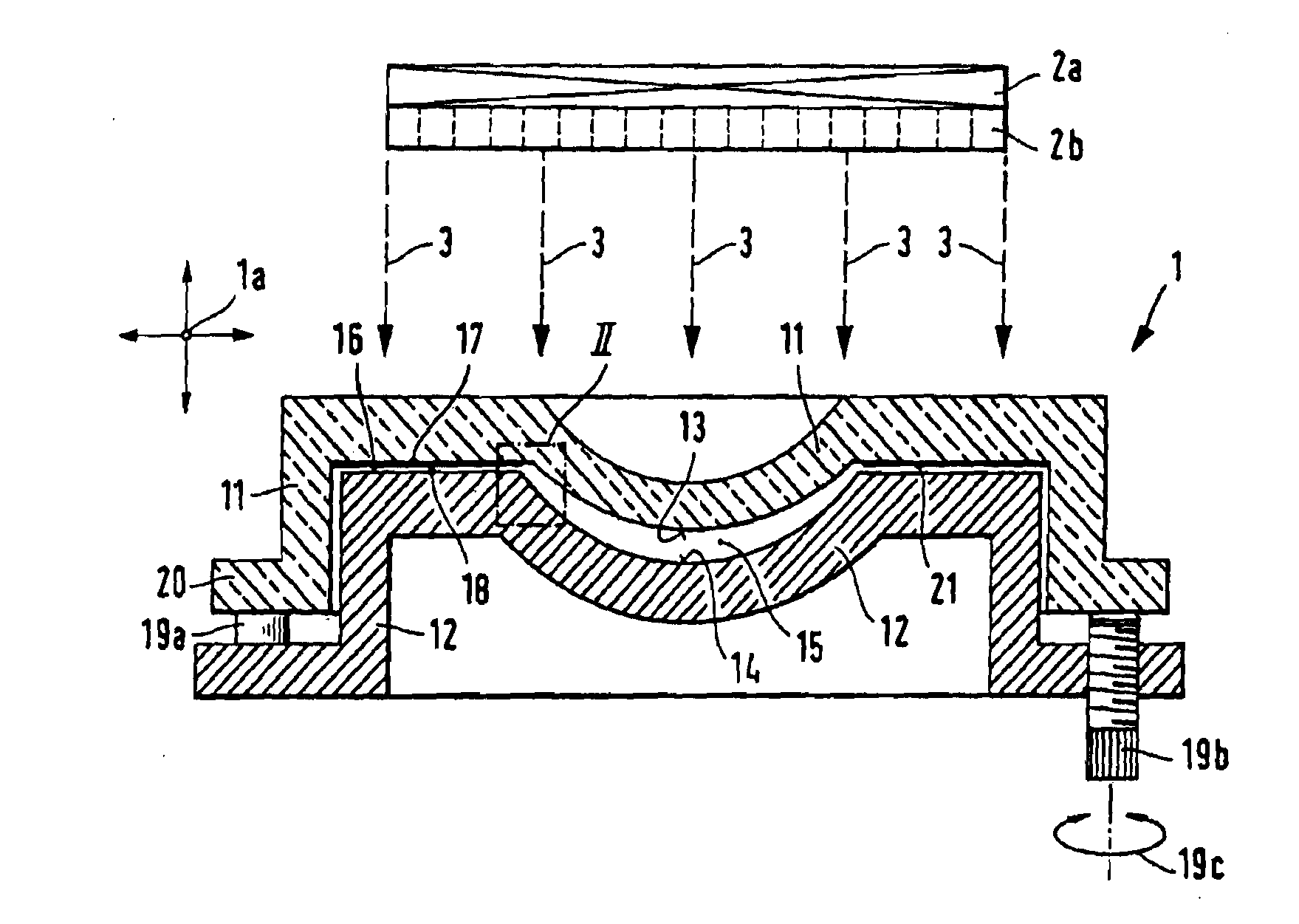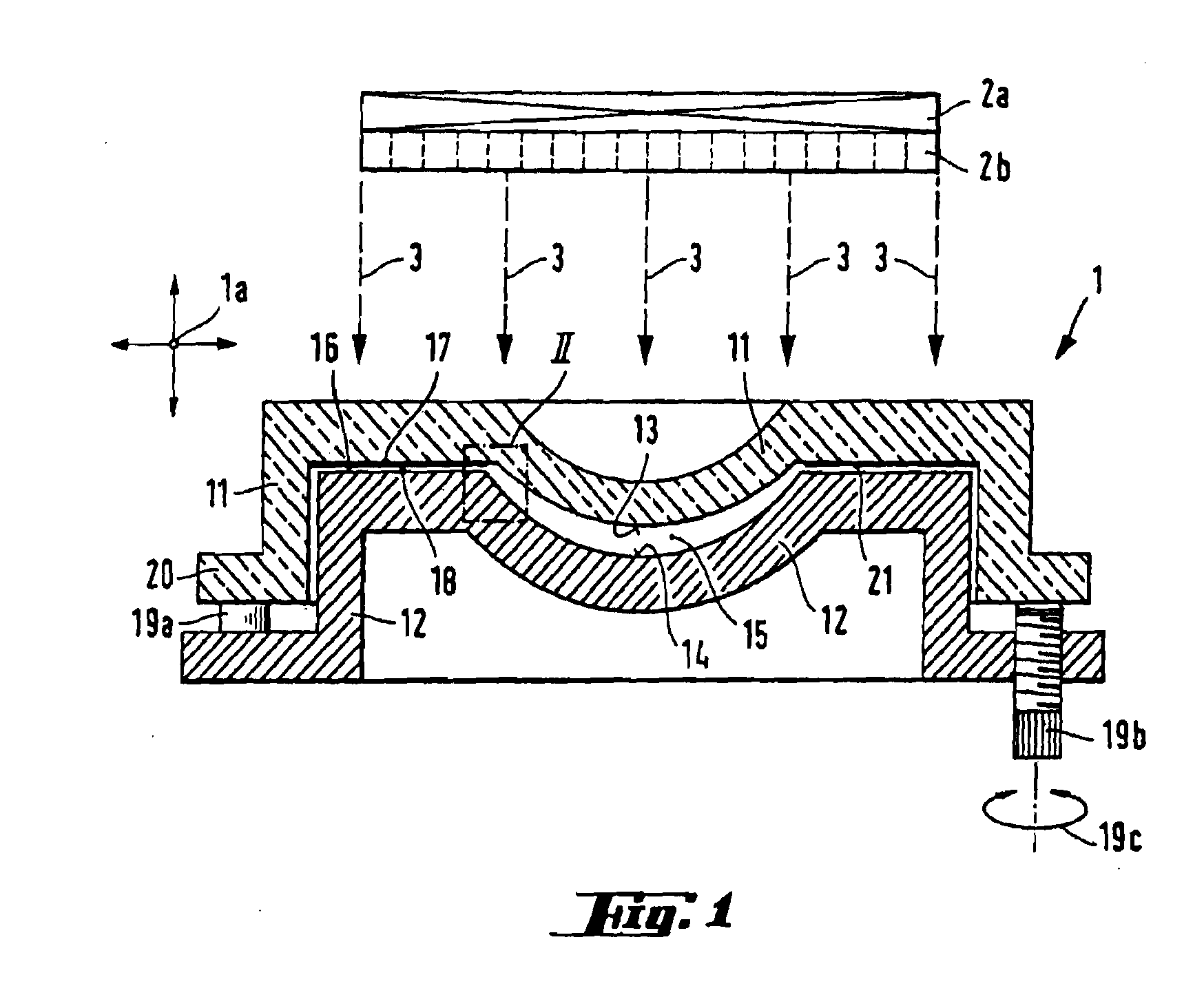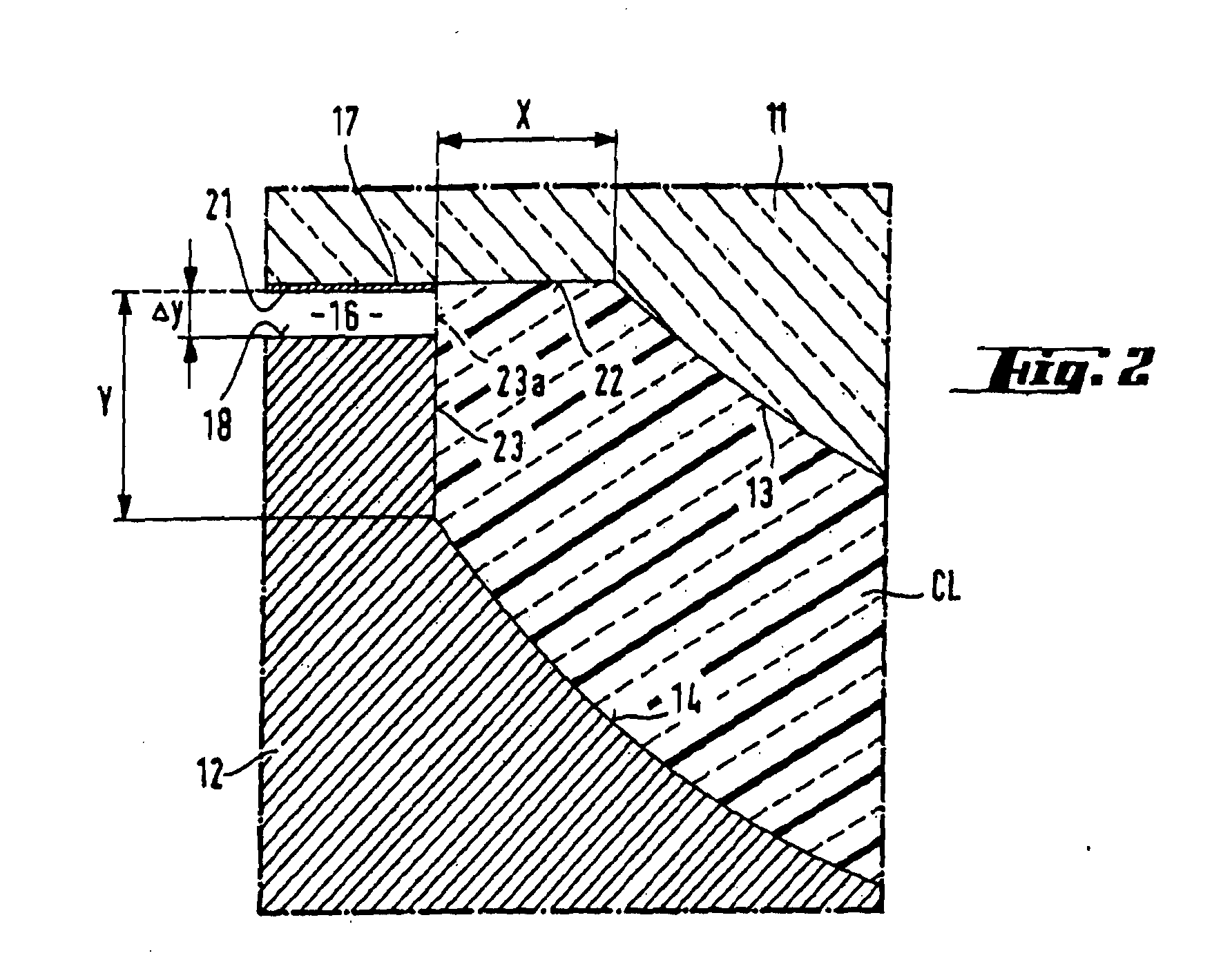Molds for making contact lenses
a technology of contact lenses and molds, which is applied in the field of molds for making contact lenses, can solve the problems of difficult organic solvent based cleaning process, difficult cleaning of molds utilized for the production of silicon hydrogel contact lenses, and non-uniform shrinkage of molds
- Summary
- Abstract
- Description
- Claims
- Application Information
AI Technical Summary
Benefits of technology
Problems solved by technology
Method used
Image
Examples
example 1
Preparation of CE-PDMS Macromer
[0079]In the first step, .alpha.,.omega.-bis(2-hydroxyethoxypropyl)-polydimethylsiloxane (Mn=2000, Shin-Etsu, KF-6001a) is capped with isophorone diisocyanate (IPDI) by reacting 49.85 g of .alpha.,.omega.-bis(2-hydroxyethoxypropyl)-polydimethylsiloxane with 11.1 g IPDI in 150 g of dry methyl ethyl ketone (MEK) in the presence of 0.063 g of dibutyltindilaurate (DBTDL). The reaction is kept for 4.5 h at 40.degree. C., forming IPDI-PDMS-IPDI. In the second step, a mixture of 164.8 g of .alpha.,.omega.-bis(2-hydroxyethoxypropyl)-polydimethylsiloxane (Mn=3000, Shin-Etsu, KF-6002) and 50 g of dry MEK are added dropwise to the IPDI-PDMS-IPDI solution to which has been added an additional 0.063 g of DBTDL. The reactor is held for 4.5 h at about 40.degree. C., forming HO-PDMS-IPDI-PDMS-IPDI-PDMS-OH. MEK is then removed under reduced pressure. In the third step, the terminal hydroxyl-groups are capped with methacryloyloxyethyl groups in a third step by addition ...
example 2
Preparation of Lens Formulations
[0081]A lens formulation is prepared by dissolving components in 1-propanol to have the following composition: 33% by weight of CE-PDMS macromer prepared in Example 2, 17% by weight of N-[tris(trimethylsiloxy)-silylpropyl]acrylamide (TRIS-Am), 24% by weight of N,N-dimethylacrylamide (DMA), 0.5% by weight of N-(carbonyl-methoxypolyethylene glycol-2000)-1,2-disteaoyl-sn-glycero-3-phosphoethanolamin, sodium salt) (L-PEG), 1.0% by weight Darocur 1173 (DC1173), 0.1% by weight of visitint (5% copper phthalocyanine blue pigment dispersion in tris(trimethylsiloxy)silylpropylmethacrylate, TRIS), and 24.5% by weight of 1-propanol.
example 3
Preparation of Lenses
[0082]Lenses are prepared by cast-molding from the lens formulation prepared above in a reusable mold, similar to the mold shown in FIGS. 1-6 in U.S. Pat. Nos. 7,384,590 and 7,387,759 (FIGS. 1-6). The mold comprises a female mold half made of S-PFL53 (fluorinated glass and a male mold half made of quartz. The UV irradiation source is a Hamamatsu lamp with the WG335+TM297 cut off filter at an intensity of about 4 mW / cm.sup.2. The lens formulation in the mold is irradiated with UV irradiation for about 25 seconds.
PUM
| Property | Measurement | Unit |
|---|---|---|
| surface roughness | aaaaa | aaaaa |
| surface roughness | aaaaa | aaaaa |
| surface roughness | aaaaa | aaaaa |
Abstract
Description
Claims
Application Information
 Login to View More
Login to View More - R&D
- Intellectual Property
- Life Sciences
- Materials
- Tech Scout
- Unparalleled Data Quality
- Higher Quality Content
- 60% Fewer Hallucinations
Browse by: Latest US Patents, China's latest patents, Technical Efficacy Thesaurus, Application Domain, Technology Topic, Popular Technical Reports.
© 2025 PatSnap. All rights reserved.Legal|Privacy policy|Modern Slavery Act Transparency Statement|Sitemap|About US| Contact US: help@patsnap.com



